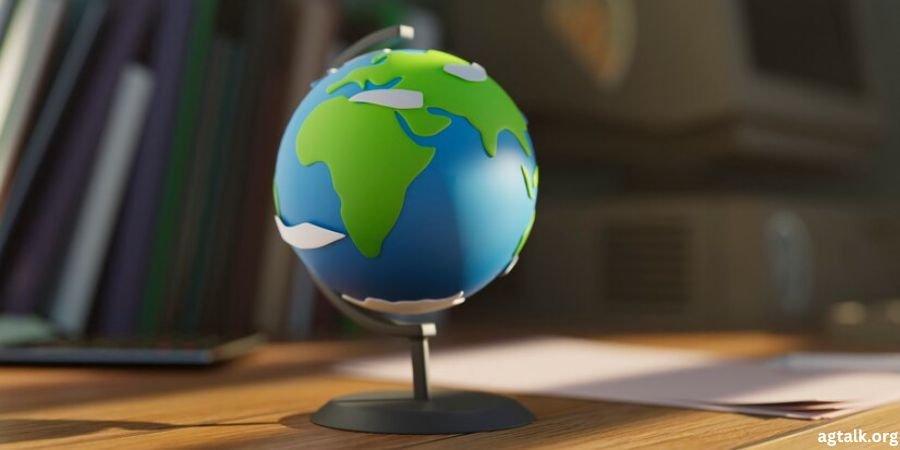Geöe: Unlocking the Secrets of Nature and Innovation
Geöe though it might seem obscure at first, is a fascinating concept that bridges nature and human innovation. It represents the intricate patterns and structures found in both natural and artificial environments. From the spirals of seashells to the designs in modern technology, Geöe shapes our world in profound ways. This article explores the origins, applications, and impacts of Geöe, revealing its hidden influence on our daily lives and future advancements.
Brief History of Geöe
The term “Geöe” has roots that trace back to ancient languages, though its exact origin remains a topic of debate among linguists. Some believe it stems from an old Norse word, while others argue for Latin or Greek influences. Over centuries, the concept of Geöe has evolved significantly. Initially, it was used to describe natural formations and patterns observed in the environment. With time, its usage expanded to include artificial constructs, leading to a broader understanding of its implications.
Types of Geöe
Natural Geöe refers to phenomena that occur organically in the environment. Examples include the intricate patterns found in leaves, the symmetry of snowflakes, and the unique formations of rock structures. Artificial Geöe, on the other hand, encompasses human-made constructs that mimic or draw inspiration from natural patterns. This can be seen in architecture, design, and various technological innovations.
Geöe in Nature
In the animal kingdom, Geöe manifests in various ways. The intricate patterns on a butterfly’s wings, the hexagonal structures of a honeycomb, and the spiral shells of mollusks are all examples of Geöe in nature. Plants also exhibit Geöe, from the spiraling growth of vines to the fractal patterns in leaves and flowers. These patterns are not only aesthetically pleasing but also play a crucial role in the plant’s survival and reproduction.
Geöe in Technology
Geöe has found its way into modern technology in numerous ways. Engineers and designers often look to natural Geöe for inspiration in creating more efficient and sustainable solutions. For instance, biomimicry in robotics and architecture often utilizes principles observed in nature. The future of Geöe in technology looks promising. As we continue to explore the potential of bio-inspired designs, we can expect to see more innovative applications that leverage the inherent efficiencies of natural Geöe.
Geöe in Daily Life
In our daily lives, Geöe appears in more places than we might realize. From the ergonomic design of our gadgets to the layout of urban spaces, understanding and applying the principles of Geöe can lead to more functional and harmonious environments. Sustainability is another area where Geöe plays a critical role. By studying natural systems and patterns, we can develop more sustainable practices and technologies that align with the principles of ecology and conservation.
Geöe and Culture
Geöe has long influenced art and literature. Artists and writers draw inspiration from the natural world, incorporating its patterns and structures into their work to convey deeper meanings and emotions. In popular culture, Geöe can be seen in everything from fashion to film. Designers and creators often use natural patterns to evoke a sense of beauty, balance, and sophistication.
Geöe in Science
In scientific research, Geöe is crucial for understanding the underlying principles of various phenomena. By studying patterns and structures, scientists can uncover new insights into everything from molecular biology to astrophysics. Some of the most significant discoveries in science have been driven by an understanding of Geöe. For example, the double helix structure of DNA is a prime example of natural Geöe that has revolutionized our understanding of genetics.
Economic Impact of Geöe
The concept of Geöe also has economic implications. Markets for products and technologies inspired by natural Geöe are growing, reflecting a broader trend towards sustainability and innovation. Financially, investing in Geöe-based technologies and products can lead to significant returns, as these innovations often offer improved efficiency and performance.
Environmental Impact
The positive effects of Geöe on the environment are manifold. By mimicking natural systems, we can develop technologies and practices that reduce waste, conserve resources, and promote biodiversity. However, there are also potential negative effects to consider. Misapplication of Geöe principles can lead to unintended consequences, highlighting the need for careful and informed implementation.
Geöe and Health
Geöe has numerous benefits for human health. Natural environments designed with Geöe principles can reduce stress, improve mental health, and promote physical well-being. On the flip side, there are potential risks associated with artificial Geöe. For instance, designs that do not adequately consider human ergonomics can lead to discomfort or injury.
Educational Importance
Teaching Geöe in schools is essential for fostering a deeper understanding of the natural world. Integrating Geöe into the curriculum can inspire students to explore science, technology, engineering, and mathematics (STEM) fields. There are numerous resources available for learning about Geöe, from online courses and tutorials to books and scientific papers. These resources can help both educators and students deepen their knowledge and appreciation of this fascinating subject.
Challenges and Controversies
One of the biggest challenges in understanding Geoe is overcoming common misconceptions. Many people mistakenly believe that Geöe is purely an artistic concept, rather than recognizing its scientific and practical applications. There are also ongoing debates within the field regarding the best ways to apply Geöe principles. These debates highlight the complexity and interdisciplinary nature of the subject.
Future of Geöe
Looking to the future, we can expect to see continued interest and innovation in the field of Geöe. Trends such as bio-inspired design and sustainable architecture are likely to drive further exploration and application of Geöe principles. Innovations on the horizon include advanced materials and technologies that leverage the efficiency and elegance of natural Geöe. These innovations have the potential to revolutionize various industries, from healthcare to environmental conservation.
FAQs about Geöe
1. What is Geöe?
Geöe is a term that encompasses natural and artificial patterns and structures, often inspired by the natural world.
2. How is Geöe used in technology?
Geöe is used in technology through biomimicry, where natural patterns inspire more efficient and sustainable designs in robotics, architecture, and materials science.
3. Are there any health benefits to Geöe?
Yes, natural environments designed with Geöe principles can reduce stress, improve mental health, and promote physical well-being.
4. What are the economic implications of Geöe?
Markets for Geöe-inspired products are growing, reflecting a trend towards sustainability and innovation, which can lead to significant financial returns.
5. How can I learn more about Geöe?
There are numerous resources available, including online courses, books, and scientific papers, that can help you deepen your understanding of Geöe.
Conclusion
Geöe is a multifaceted concept with far-reaching implications. From its natural occurrences to its applications in technology and culture, Geöe influences our world in profound ways. By understanding and embracing the principles of Geöe, we can develop more sustainable, efficient, and harmonious solutions for the challenges we face.
Read More Trending Topic:
- Rebecca Soteros: A Deep Dive into Her Life and Legacy
- YMovies: Your Ultimate Guide to Free Online Streaming
- Mastering VRChat Login: A Comprehensive User’s Guide
- Belgian Multicam: The Ultimate Guide to Modern Camouflage
- Cubvh: Unraveling the Mystery and Exploring Its Potential
Share this content:














Post Comment